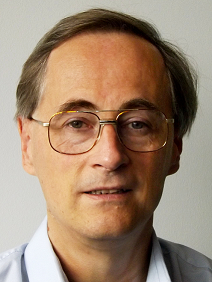After the success of our blog post, an interview with our Chairman, we decided it has high time we introduced you to other members of the ICCDU 2016 admin team. Up this week is our Vice-Chairman, Professor Michael North.
 Professor North is a graduate of the Universities of Durham and Oxford and has held academic posts at the Universities of Wales, London and Newcastle before being appointed to his present post as professor of green chemistry at the Green Chemistry centre of Excellence of the University of York. His research interests cover many aspects of CO2 utilisation including: synthesis and applications of cyxclic carbonates, CO2 plasma chemistry, CO2 electrochemistry and synthesis of polymers incorporating CO2. He is deputy director of CO2Chem.
Professor North is a graduate of the Universities of Durham and Oxford and has held academic posts at the Universities of Wales, London and Newcastle before being appointed to his present post as professor of green chemistry at the Green Chemistry centre of Excellence of the University of York. His research interests cover many aspects of CO2 utilisation including: synthesis and applications of cyxclic carbonates, CO2 plasma chemistry, CO2 electrochemistry and synthesis of polymers incorporating CO2. He is deputy director of CO2Chem.
So, Michael, what first attracted you to the field of carbon dioxide utilisation?
When I was a PhD student thinking about an academic career I really wanted to work on sustainable chemistry. However I was 20 years ahead of my time as conventional wisdom at the time was that fossil fuels would last for ever and nothing mankind could do would have any impact on the planet. Therefore I realised that I would never get a job or grants working in that area. Hence I went and worked on other aspects of catalysis for 25 years. Eventually, I got involved in EPSRCs grand challenges and in particular helping to establish and run one on CO2 utilisation. My 25 years experience in asymmetric Lewis acid catalysis is now coming in useful in activating CO2, so perhaps it was not time wasted.
Can you tell us what you’re currently working on?
We are best known for our work on cyclic carbonate synthesis from CO2 and epoxide so. However, since my move to York 2 years ago I have become interested in whole systems analysis and now we are concerned that everything used in a CO2 reaction is sustainable. This includes the CO2 of course, but also whatever it is reacted with, the catalyst, solvent and energy source. Only in this way can we develop a truly sustainable chemicals industry.
CO2 utilisation is becoming more and more advanced. Is there anything currently being researched/tested in the field that you find exciting and interesting?
At the moment I am really interested in using room temperature plasma to activate CO2 for reduction to CO. This is a very energy efficient way of activating CO2 which can be linked to renewable energy and which needs no other reactant. It is as close to perfect CO2 chemistry as I have seen.
What would be the one piece of advice that you pass onto someone entering this field?
Think about scale. No one is interested in CO2 chemistry that can only be done on a few mg or even a few kg scale. How readily available are the other reactants? How much energy will be needed and where will it come from? Does the catalyst contain endangered elements etc?
Describe your perfect 24 hours without travel restrictions
I would love to spend 24 hours in my lab doing reactions that worked first time and with no interruptions by email, administrators etc. However I am not sure my group would feel that this was perfect.
If you could meet anyone who would it be and why?
Possibly the people who run the Mauna Loa CO2 monitoring station. Their data over the last 50 years is the basis of the hockey stick graph and has done more than anything else to alert the world to the dangers of climate change.
Tell us one thing about you that not many people know about.
I do not have much time for hobbies, but I am a reasonably keen gardener and the plants I grow have probably adsorbed more CO2 than my chemistry
What do you hope delegates will get out of ICCDU 2016?
New friendships and collaborations. A truly stimulating meeting where new and exiting results are presented that could revolutionise the subject.
Michael will be on hand to discuss CO2 Utilisation throughout the conference.
Until next time,
Katy and the admin team.